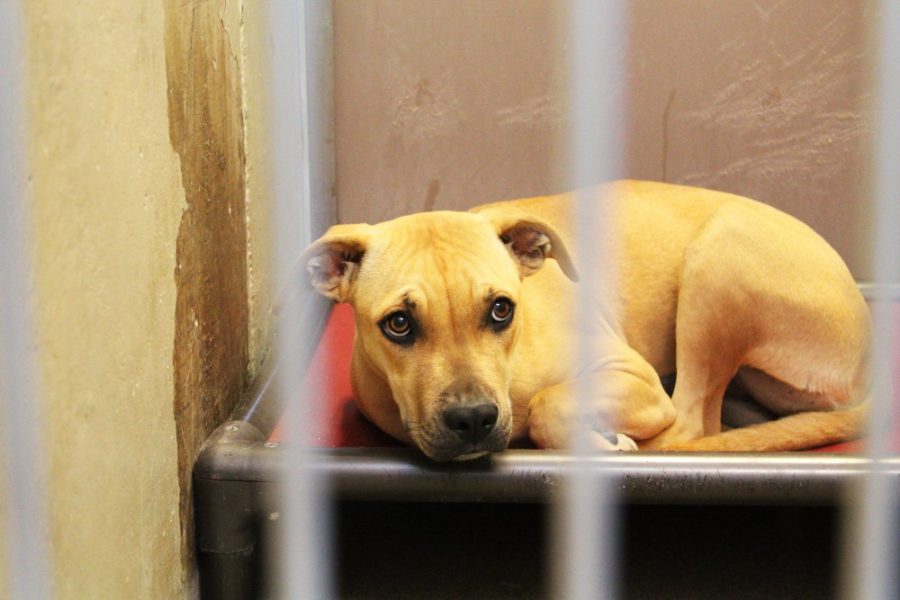Pima Animal Care Center responded to a call concerning a deceased dog that appeared badly abused on Jan. 6, according to a release from the agency. The dog was taken back for medical examination by PACC officers, and later sent for a necropsy. The cause of the death remains unknown, but is still under investigation by PACC officials and the Tucson Police Department.
Pima County received a total of 70,191 calls regarding animal cruelty and some kind of neglect in 2016, and more than 2,000 calls were received regarding neglect alone, according to Adam Ricci, an enforcement operations manager at PACC.
“I have been around animals for quite a few years and the one thing I always like to try and clarify to people is that sometimes yes, there are bad people and sometimes there are good people that just don’t have the resources to help the animal,” Ricci said.
Ricci said he thinks the way people were brought up, what they were exposed to and their culture makes an impact on the way they may view animals.
RELATED: Lovin’ Spoonfuls owner Sunny Anne Holiday talks her vegan eatery and animal cruelty
“Sometimes it’s a lack of resources or knowledge,” Ricci said. “One of the things we see with that is the lack of education. We would like people to take better care of their animal by educating themselves.”
One of the other things Ricci thinks is an important component is the link between animal abuse and other types of abuse like domestic violence, child abuse and elder abuse.
“There is a national program called the Linkage Project and they’re linking commonalities on how all of these different types of behaviors are actually interlinked and have similar components to them,” Ricci said.
According to Ricci, a lot of states in the U.S are now looking into creating protection orders for the animals of domestic violence victims because of the strong connection between domestic violence and animal abuse.

Aurelio José Figueredo, a UA professor in psychology, said animal abuse is often one of the first antisocial behaviors by individuals who display violent and sexually offensive behavior.
“It is a predictor and I believe a deficit in empathy,” Figueredo said.
According to the Humane Society of the United States, 71 percent of domestic violence victims reported that their abuser also targeted pets.
“It just looks like there is some kind of progression where a person is ramping up to violence against humans and starts out with violence against animals,” Figueredo said. “It’s not known whether one causes the other, but it could be that it’s just a general disposition that causes both and not one thing that causes another.”
Figueredo believes the reason someone is violent towards animals is because they lack a connection to the feelings of others.

“Inflicting pain towards a person is really hard to do if you are someone with empathy,” Figueredo said.
Ricci said that whenever someone suspects or sees something resembling animal abuse or neglect, even if there is uncertainty, it is always best to call so the situation can be evaluated and handled from there.
“I know that they are starting to take more of a step towards helping with law enforcement, but it’s still a big problem people need to take more seriously,” said Alyssa Marvin, a psychology junior and former Humane Society volunteer. “It might start to get better, but everything needs to be seen in the public eye more in order for it to get better.”
The Animal Cruelty Education Program is a program in which the Humane Society of Southern Arizona and member organizations with the Animal Cruelty Task Force of Southern Arizona come together to offer adults education, access to services and everyday knowledge needed to improve pet ownership.
RELATED: Local Jeremy Brown named Greatmats’ Dog Trainer of the Year for second year in a row
The HSSA also offers educational programs to children and for schools.
According to Ricci, based on the information is gathered by investigations, officials are able to inspect premises, which notify to owners asking them to come into compliance with the law in a number of days. If the mistreatment of the animal continues after the amount of time given, officials can issue citations in some situations and the animal can be taken through a civil bond process by PACC.
According to Pima County, penalties for animal neglect or cruelty range from fines of $100 to $2,500, six months of jail time, probation or a combination of both and up to a three-year period in which the previous animal owner is not in possession or control of any pets.
If any signs of animal cruelty are noticed contact 88-CRIME.
Follow Angela Martinez on Twitter.









